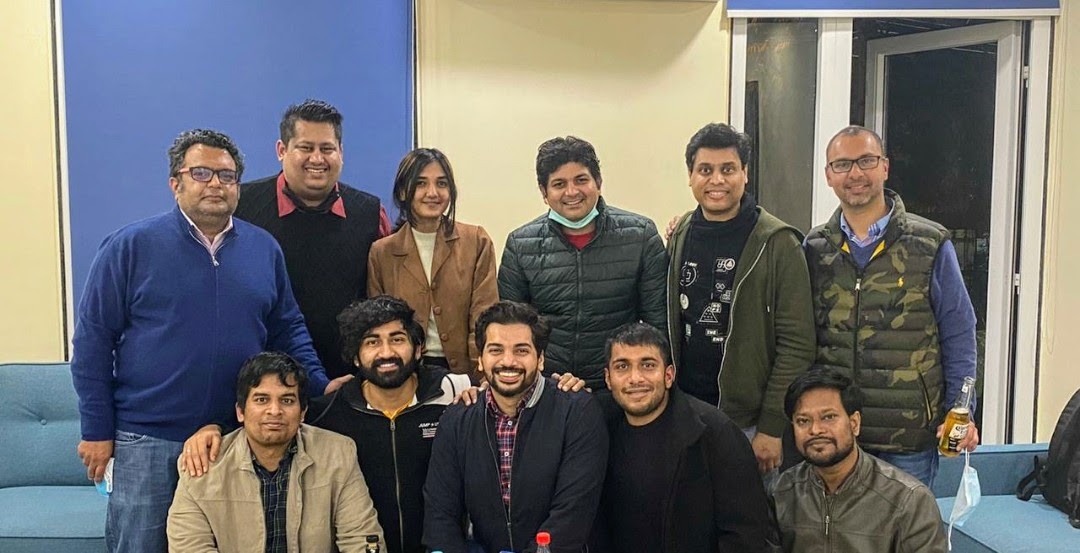How This Delhi Startup Uses IoT To Create A Digital Health Ecosystem

For this week’s startup feature, Analytics India Magazine spoke to Kunal Kinalekar, CTO at BeatO, to understand how the company is combining IoT enabled cost-effective hardware to provide a full-stack digital health solution.
Founded in 2015 by Gautam Chopra and Yash Sehgal, BeatO is a Delhi-based health-tech startup which helps people with chronic conditions such as diabetes and hypertension manage their condition effectively. BeatO combines IoT enabled cost-effective hardware, a made in India smartphone glucometer which connects directly to phones with the BeatO app ecosystem, to support end-to-end management for their users.
Flagship products
AI-powered BeatO provides actionable insights to manage diabetes. According to Kinalekar, the BeatO app ecosystem offers a complete solution to all daily needs of a diabetic, ranging from blood-glucose monitoring, in-app consultation with doctors and nutritionists, scheduling medication deliveries, insurance and diagnostics to diet plans.
Diabetes Total, a subscription-based comprehensive plan, is BeatO’s flagship product. Diabetes Total offers the entire ecosystem for diabetes management – ranging from Rs 5 lakh hospitalisation cover, unlimited doctor/specialist consultations, BeatO’s IoT glucometers and unlimited test strips, access to BeatO’s AI-driven diabetes management system, OPD benefits on medicines, blood tests and even physical exams.
What’s the differentiator
“Since our user journey begins with the purchase of a blood glucose monitor, we face competition from the traditional glucose monitoring device manufacturers who offer bulky, non-smart, non-IoT, expensive devices. Compared to this, we have a small form factor device (as big as a ?10 coin) which is smart, IoT based and one of the most inexpensive devices (including the kit) in the market,”said Kinalekar.
“BeatO users can track their readings as the data is synced on the cloud once a reading is taken and actionable insights are defined. Our solution provides end-to-end management for chronic conditions which cover all needs of a user in one place – making it a product that hardly exists in India,” he added.
Use of AI & IoT at BeatO
BeatO’s AI model is built on inferences and a correlation-based structured learning system, which uses a feedback loop to improve generated insights. BeatO’s ecosystem understands and evaluates a user based on 35 data points. The datapoint comprises blood-glucose readings collected from the IoT-based hardware, past and current medical condition, etc.
The company uses supervised learning to feed these data points as a training set to define the initial insights, which is improved using a feedback loop to define deviation compared to a healthy person. This helps improve the model to generate more accurate insights as the dataset keeps increasing.
“Basically, we use machine learning to bridge the gap between understanding our user’s health and effectively managing their condition. We do this through different techniques such as running linear regression which help us churn data to understand the data points better, and use decision trees to determine a course of action and map possible consequences or outcomes of those actions,” said Kinalekar.
“We also use Unsupervised learning to understand the overlap between comorbid conditions such as hypertension and diabetes. We have created complex neural systems and hierarchical tree structure to train our system to learn and understand the impact of blood pressure on blood sugar levels. We are creating a feedback loop with the system. We teach the system certain things and in turn, we learn much more,” he added.
Core tech stack
At BeatO, the data is stored and taken care of by the SQL server which is layered by Python Scripts to fetch and Python library based services to manipulate and generate learnings. These systems are hosted using distributed nodes over AWS and GCP to function parallelly.
The company majorly relies on LAMP stack and Linux-based solutions. For Android and IoS apps, BeatO uses Kotlin, Java and Swift technologies. AngularJS, node.js and MVC-based PHP are used for web-based tools such as website, dashboards, internal systems, doctors and teleconsultation portals. Lastly, for the learning systems, the startup uses Python and its libraries.
Hiring at BeatO
Talking about hiring, Kinalekar said, “Since we create a lot of customer solutions – we need people who have competencies in multiple technologies. While we look for self-starters, we most importantly look for techies who understand technologies that are poles apart. For example, Someone knowing Python, a completely backend server-side solution, would also be expected to understand the end goal of how the solution is going to interact with users. This means you need an understanding of usability which is on a completely different spectrum.”
Roadmap
- The company will continue to penetrate the Indian market by bringing in more members into the BeatO ecosystem.
- Planning to increase focus on other chronic conditions such as hypertension.
- BeatO is gearing up to launch their pilot programmes in international geographies this year.
- The startup will also continue building their existing subscription products and bring significant value to the member population. Apart from the app, these subscriptions will be available through other partners in the ecosystem.
- Given the high correlation of Diabetes with Hypertension, BeatO will be working on hypertension management products, and continue to bring learning and expertise from diabetes management into this space as well.
The post How This Delhi Startup Uses IoT To Create A Digital Health Ecosystem appeared first on Analytics India Magazine.


